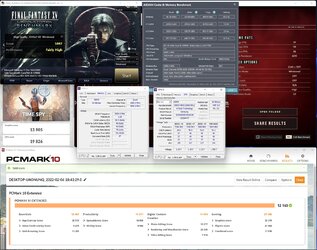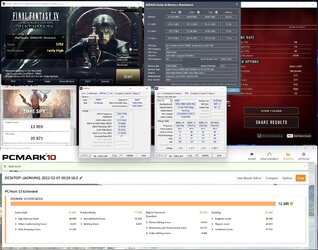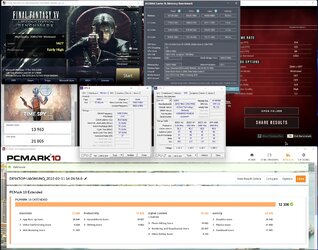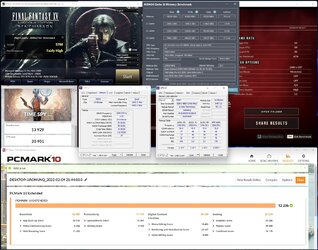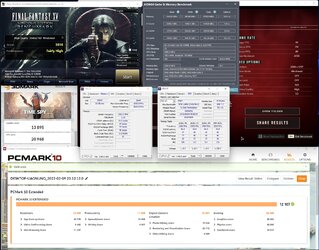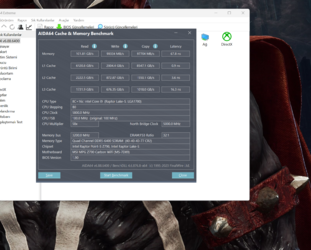Today I will share my experience with the ADATA XPG Lancer 32GB DDR5-6000 CL40 kit. As you probably noticed, there is a front-page review that covers this memory kit too. However, there is one significant difference, my memory kit is using Samsung IC, while the one on the front page has Hynix IC. ADATA decided to put all IC under the same product number so whatever fits the XMP can be there. So far it's only Samsung and Hynix as most Micron chips won't reach DDR5-6000.
Some more specifications and features you can find on the ADATA website - click.



For sure ADATA made a good job with the XMP profile. The tested memory kit seems to work on every popular motherboard. I haven't seen problems around the web and it works fine on ASUS and Gigabyte motherboards that I have for tests right now. The price is also one of the lowest for the DDR5-6000 kits on the market. Right now it's still around $450 but you can expect it to go down soon.
The tested memory kit has no problems passing stability tests up to DDR5-6600. What is a bit weird is that somewhere there it ends and can't even pass easier benchmarks at DDR5-6800. This is not what I was expecting, considering that the G.Skill DDR5-6000 which is also using Samsung IC could run up to DDR5-7000 in tests but didn't like so tight timings as ADATA up to DDR5-6600.
Let's start with results at XMP profile and after that, some OC results at tighter timings.
The XMP is rated at DDR5-6000 CL40-40-40 1.35V so quite relaxed and the voltage is higher than required. This is where we could fit Hynix IC that likes a bit higher voltages.

Test results
As I mentioned earlier, the ADATA kit could run at CL30 while previously reviewed G.Skill couldn't even boot below CL32 at DDR5-6000+ and up to 1.60V. I'm not sure if it's a matter of used motherboard - ASUS Strix Z690-I Gaming or something else but DDR5-6800 was barely booting and was crashing randomly even in the AIDA64 benchmark.
I will try to rerun some tests once I get a better motherboard.
The ADATA XMP Lancer memory is one of the best options right now because of the lower price than the competitive series and great overclocking results. Even though I couldn't set it at DDR5-6800 then results at up to DDR5-6600 are pretty good and can be tuned further.
The tested ADATA kit could also run on Gigabyte Z690 Master up to DDR5-6400, while G.Skill Trident Z5 wasn't stable even at XMP settings (on BIOS that supposed to improve compatibility with G.Skill RAM). I blame Gigabyte for this situation as the G.Skill DDR5 is great but in this case, ADATA seems a safer option.
As usual, feel free to comment or add your own results on the ADATA XPG Lancer DDR5 memory series.
Some more specifications and features you can find on the ADATA website - click.
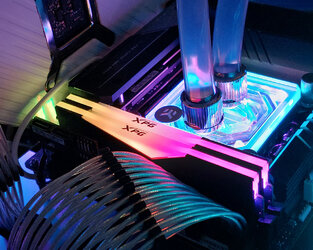
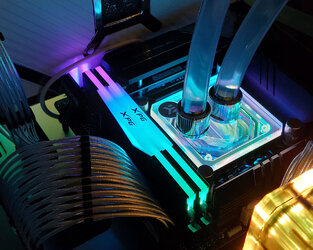
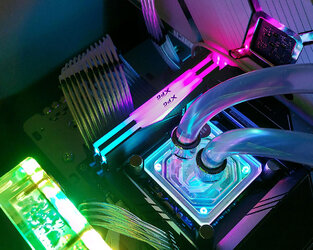
For sure ADATA made a good job with the XMP profile. The tested memory kit seems to work on every popular motherboard. I haven't seen problems around the web and it works fine on ASUS and Gigabyte motherboards that I have for tests right now. The price is also one of the lowest for the DDR5-6000 kits on the market. Right now it's still around $450 but you can expect it to go down soon.
The tested memory kit has no problems passing stability tests up to DDR5-6600. What is a bit weird is that somewhere there it ends and can't even pass easier benchmarks at DDR5-6800. This is not what I was expecting, considering that the G.Skill DDR5-6000 which is also using Samsung IC could run up to DDR5-7000 in tests but didn't like so tight timings as ADATA up to DDR5-6600.
Let's start with results at XMP profile and after that, some OC results at tighter timings.
The XMP is rated at DDR5-6000 CL40-40-40 1.35V so quite relaxed and the voltage is higher than required. This is where we could fit Hynix IC that likes a bit higher voltages.
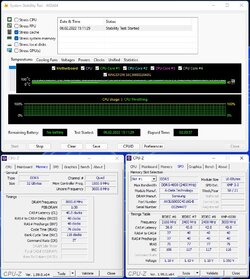
Test results
As I mentioned earlier, the ADATA kit could run at CL30 while previously reviewed G.Skill couldn't even boot below CL32 at DDR5-6000+ and up to 1.60V. I'm not sure if it's a matter of used motherboard - ASUS Strix Z690-I Gaming or something else but DDR5-6800 was barely booting and was crashing randomly even in the AIDA64 benchmark.
I will try to rerun some tests once I get a better motherboard.
The ADATA XMP Lancer memory is one of the best options right now because of the lower price than the competitive series and great overclocking results. Even though I couldn't set it at DDR5-6800 then results at up to DDR5-6600 are pretty good and can be tuned further.
The tested ADATA kit could also run on Gigabyte Z690 Master up to DDR5-6400, while G.Skill Trident Z5 wasn't stable even at XMP settings (on BIOS that supposed to improve compatibility with G.Skill RAM). I blame Gigabyte for this situation as the G.Skill DDR5 is great but in this case, ADATA seems a safer option.
As usual, feel free to comment or add your own results on the ADATA XPG Lancer DDR5 memory series.
Last edited:
